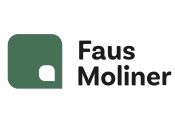The future rules of the reference price system of medicines in the National Health System shall be submitted for consultation
The Ministry of Health, Social Services and Equality (MoH) launches a preliminary public consultation about the main features of its proposal for the amendment of the system
CAPSULAS Nº 187
The reference price system of medicines in the Spanish National Health System (NHS) is approaching its second decade of existence. The purpose of this system -created in order to control public expenditure- is to divide medicines which are funded by the NHS into groups following certain criteria. Each group has the same reference price, which is the maximum price for which these medicines are funded. The system was implemented in the late ‘90s and has been subject to numerous modifications in order to optimize its functioning. The experience accumulated over the last five years, however, has highlighted the need to continue correcting certain problems, such as the uncomfortable fit of biosimilar medicines, or the exit of interesting medicinal products from the NHS as a result of excessive price erosion. The opening of a period for public consultation, prior to drafting a proposal that modifies the rules that are currently contained in Royal Decree 177/2014, is certainly good news.
The consultation launched by the MoH identifies the main features on which the amendment of the system will focus. The aim is to articulate objective and transparent criteria to determine the identity of medicines’ presentations in terms of active ingredient and administration route, in order to decide when they can be included in the same group.
Achieving this aim will require the legislator to dig deeper, avoiding overly simplistic criteria such as resorting unreservedly to the ATC classification. It must be recalled that, in this sense, the WHO has pronounced itself against using this classification when it comes to medicines funding.
On the other hand, the new rules must be strictly in line with the decisions of the Courts regarding this matter. To such extent, the Supreme Court has highlighted in several judgments that when the competent regulatory agency has indicated that two active ingredients are different, they should not be considered as equals for the purposes of their inclusion into the same group in the reference price system.
Another important change of course is the intention of the MoH to enable the creation of different groups for presentations having the same active ingredient but different administration devices, pharmaceutical forms or specific administration routes, provided that doing so entails a relevant clinical advantage. This modification is essential. If products having administration devices with very high costs such as pre-filled syringes or pre-filled pens are included in the same group, matching their lowest price, it will be impossible to maintain the most innovative presentations in the NHS, with the consequent damage for patients.
Logically, it is also proposed to revise upwards the minimum reference price for each presentation, as the current minimum reference price has proven to be insufficient. Finally, and most importantly, the information included in the Nomenclator (database for medicines included in the NHS) will be regulated in order to be publicly accessible.
In short, this is an opportunity to correct important deficiencies in the current system. Achieving an adequate balance between public savings and stimulating innovation can only bring benefits for all the operators of the system and, very specially for patients.
